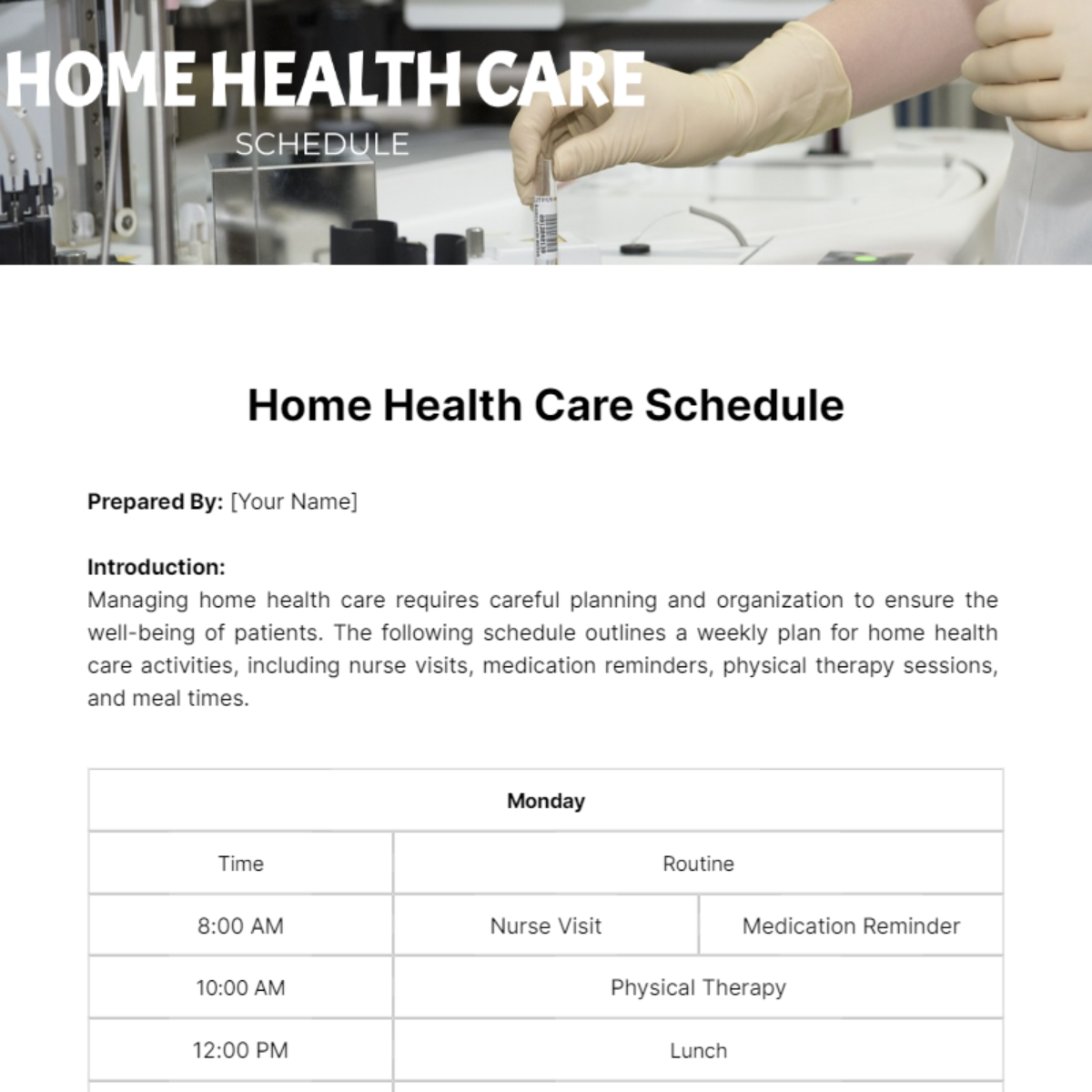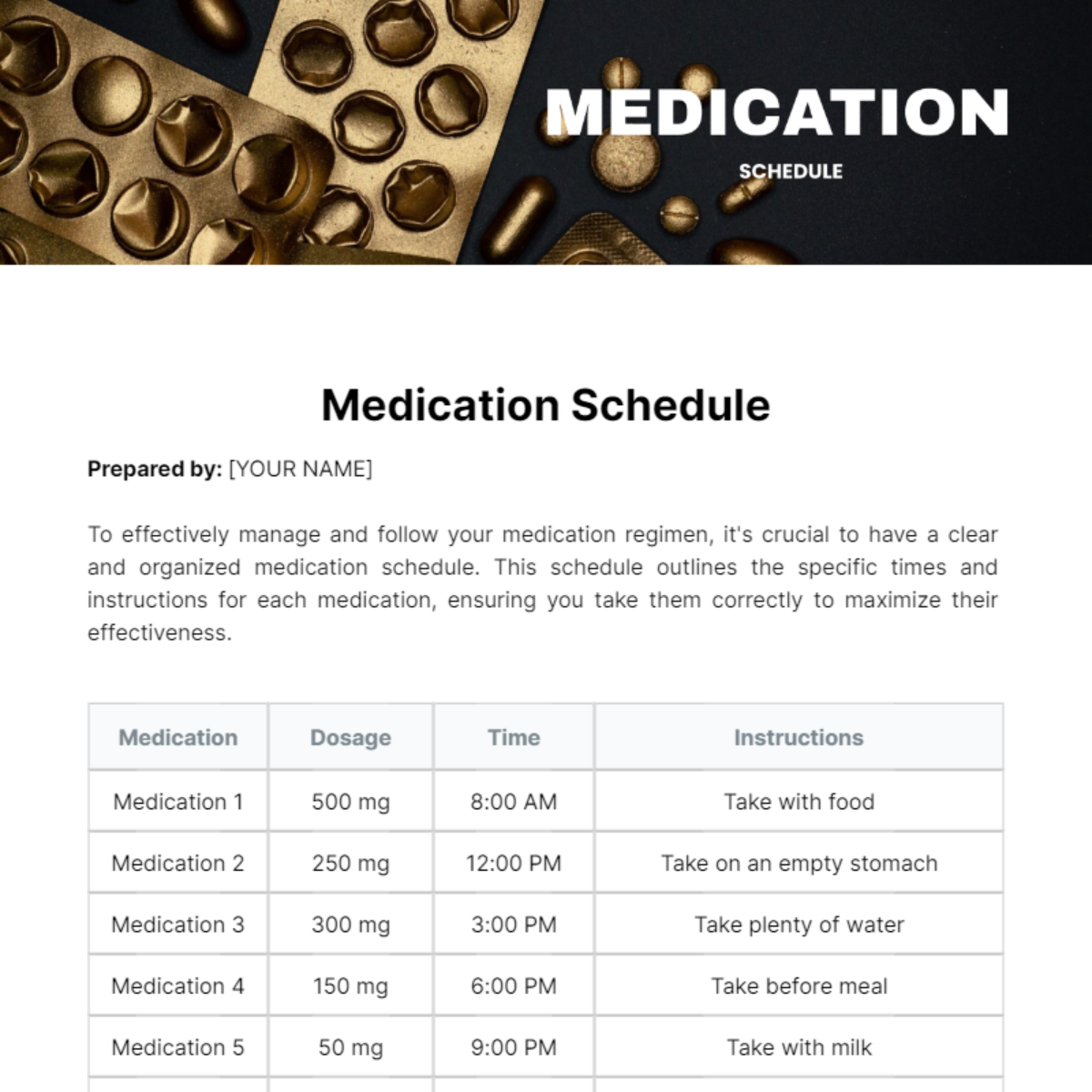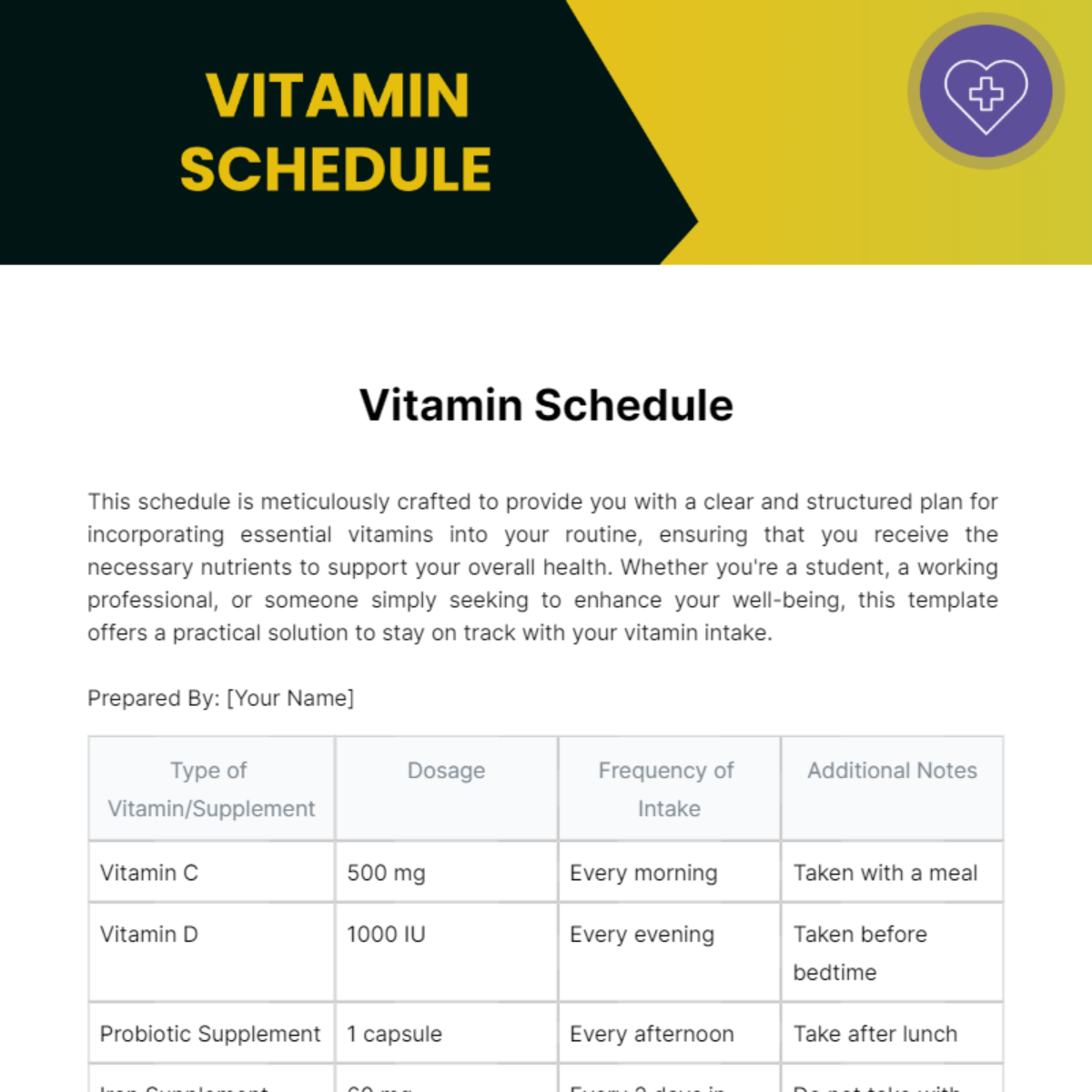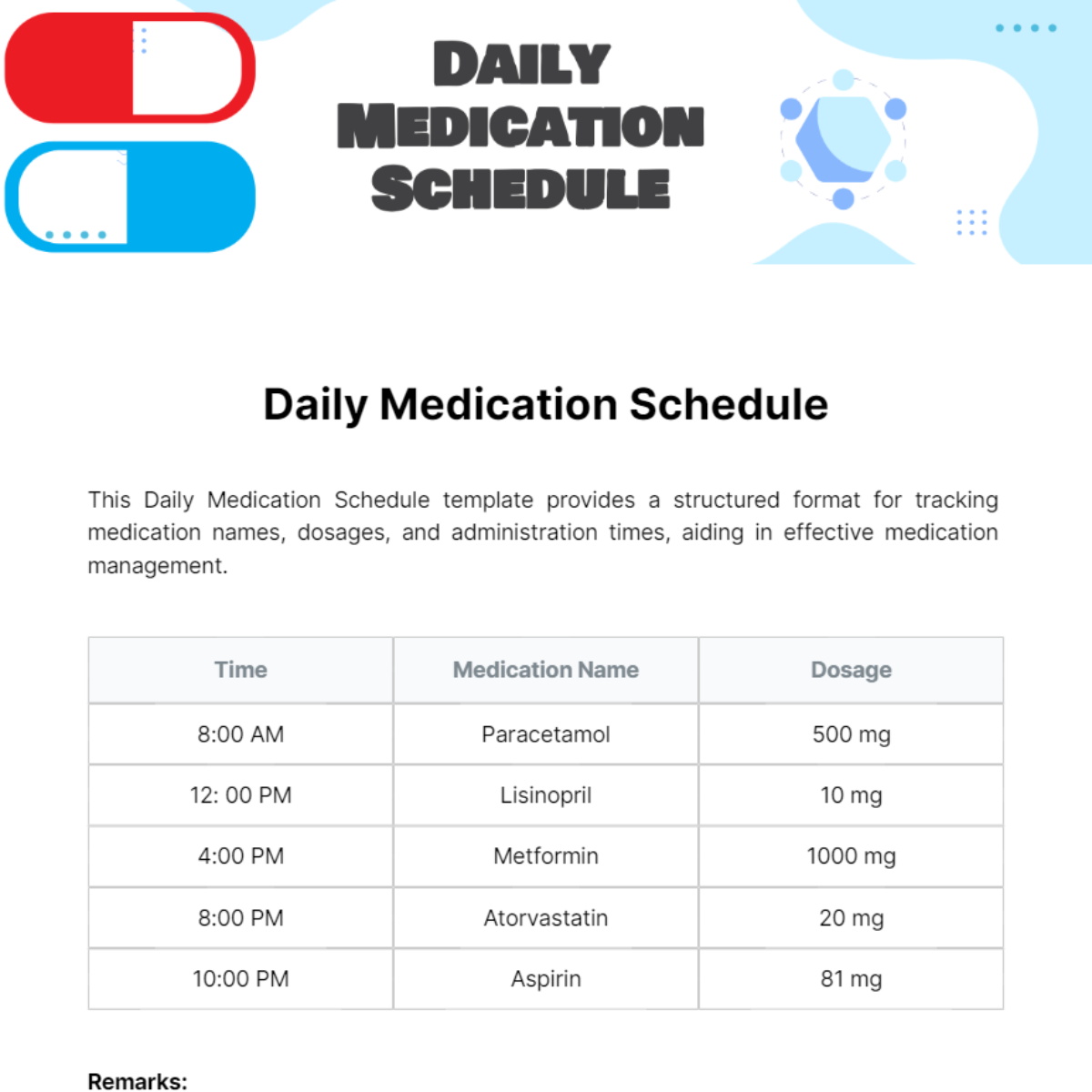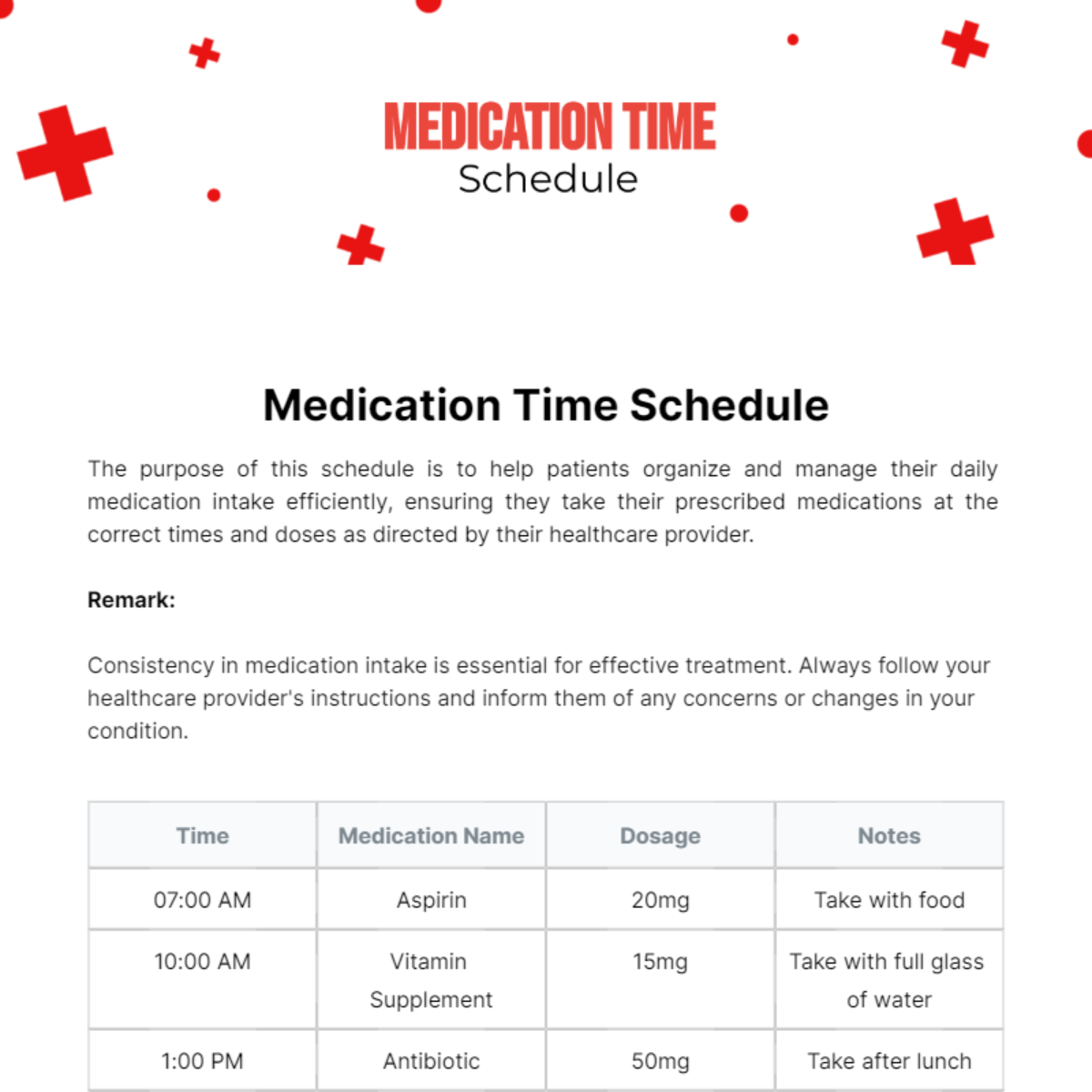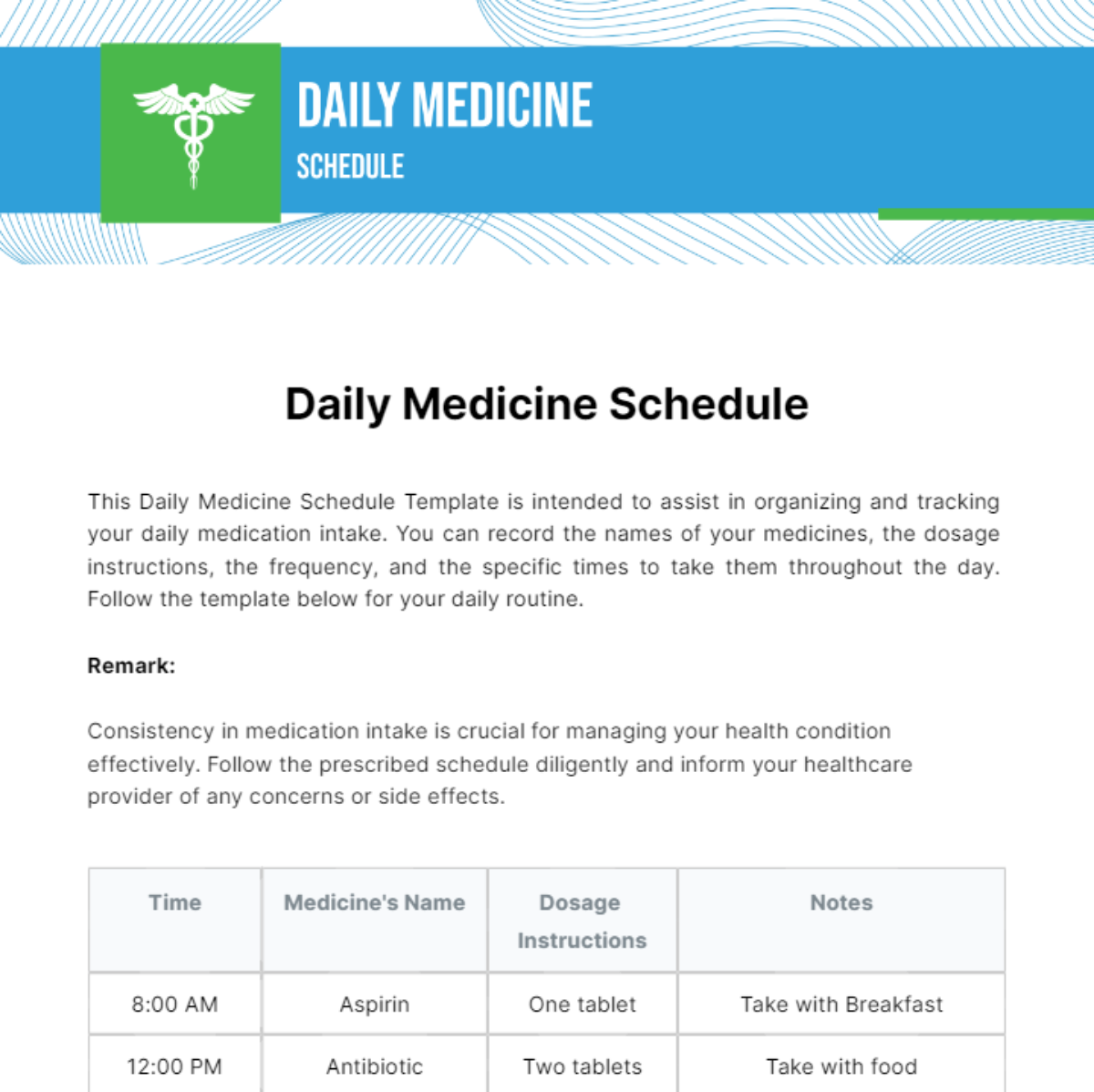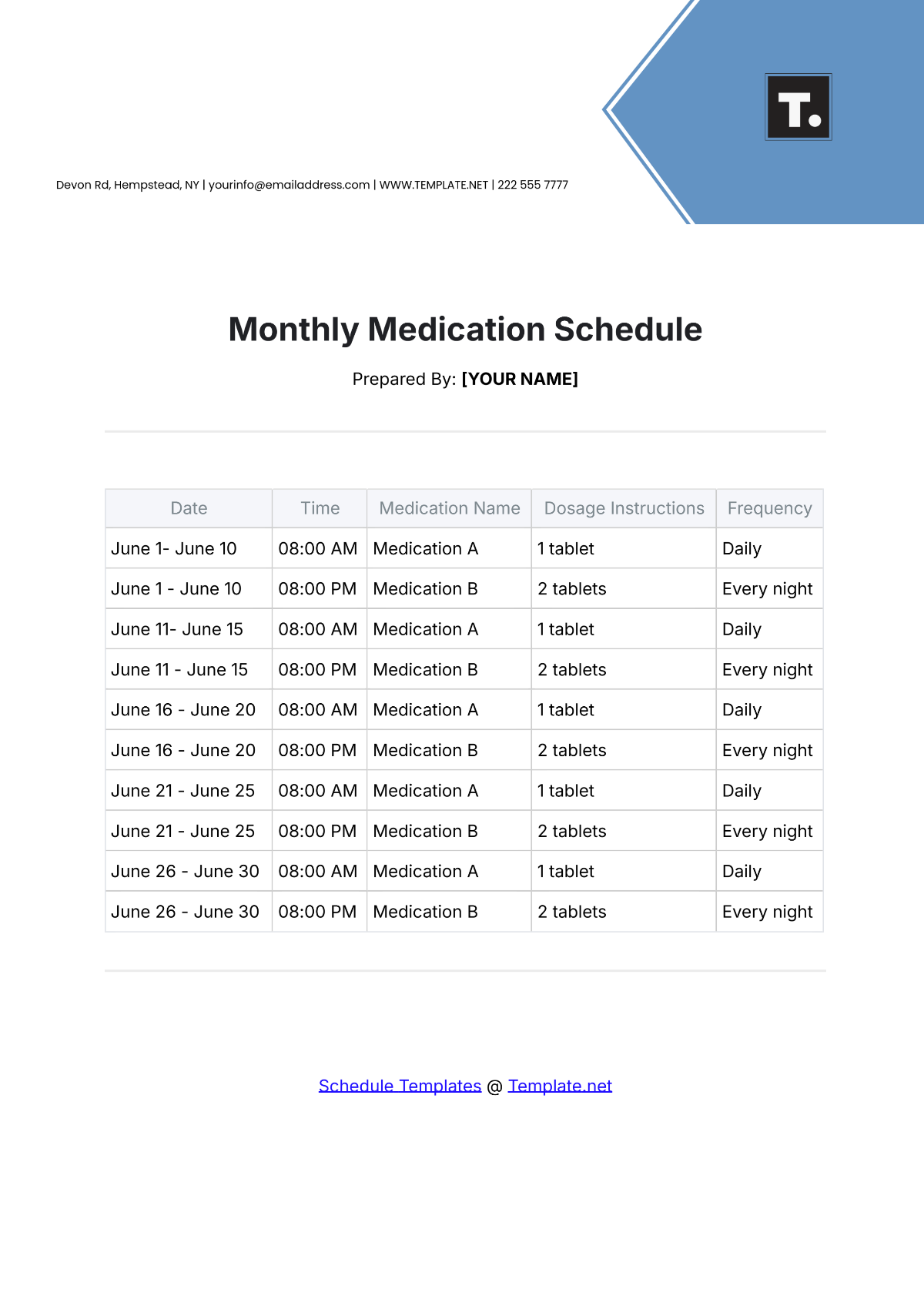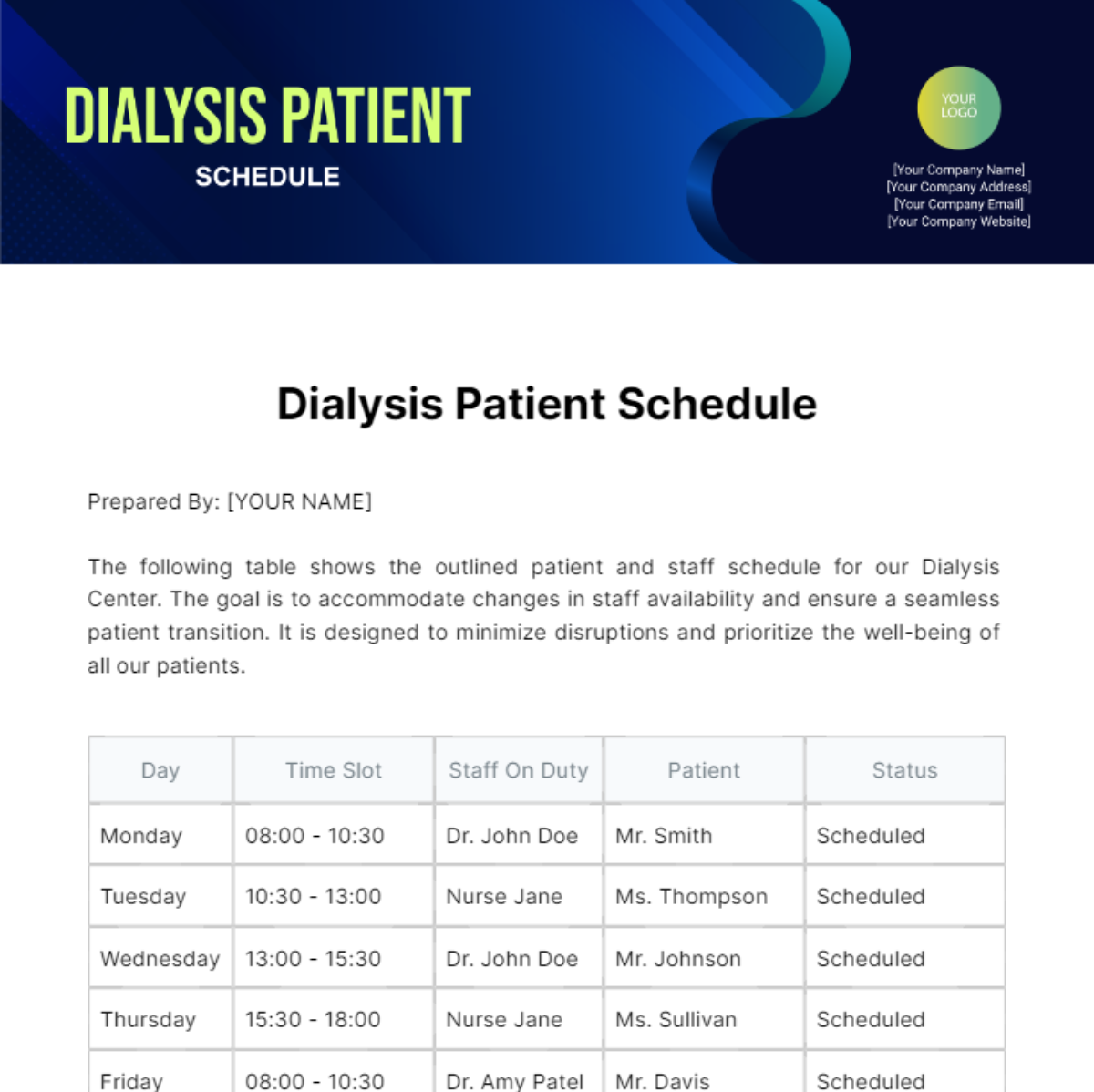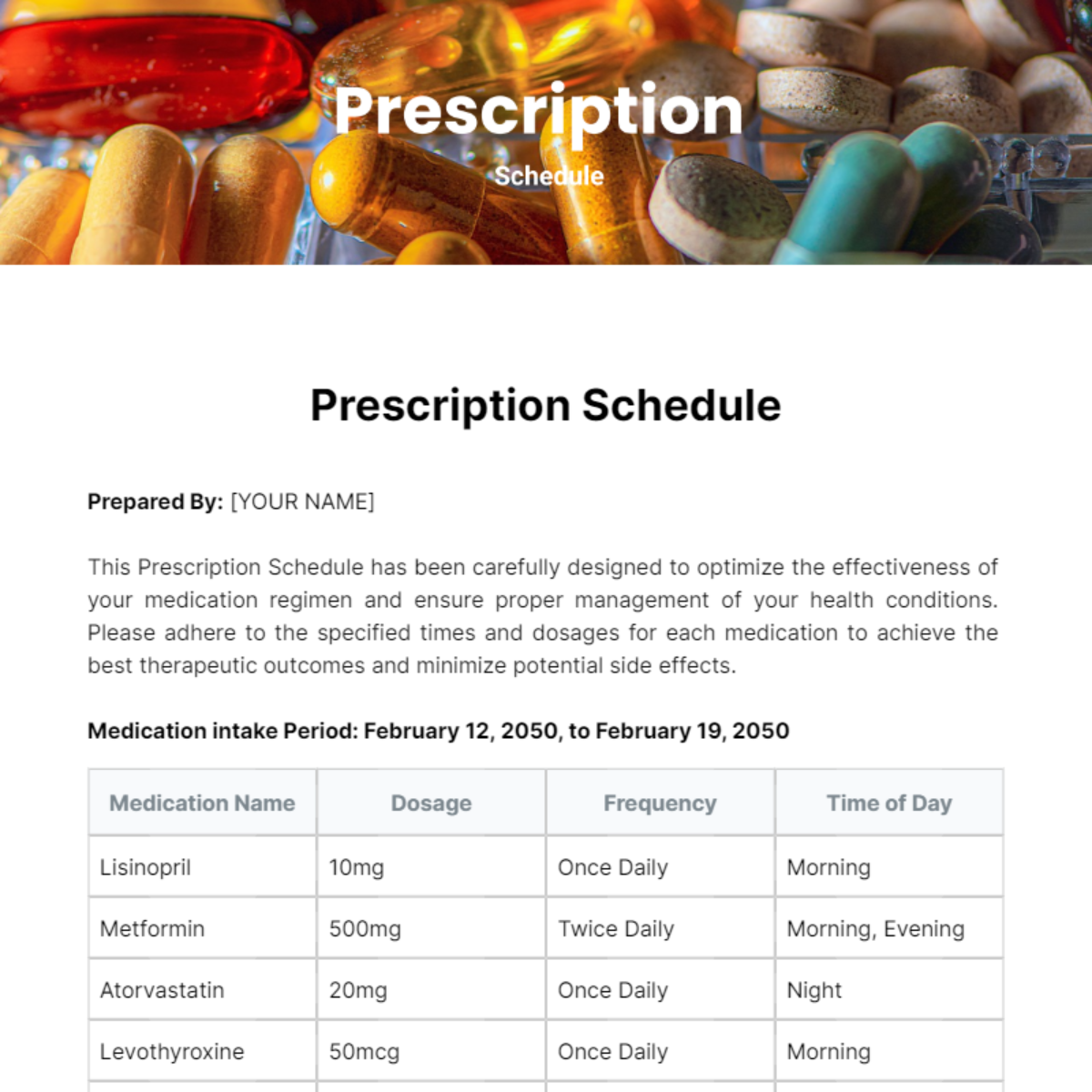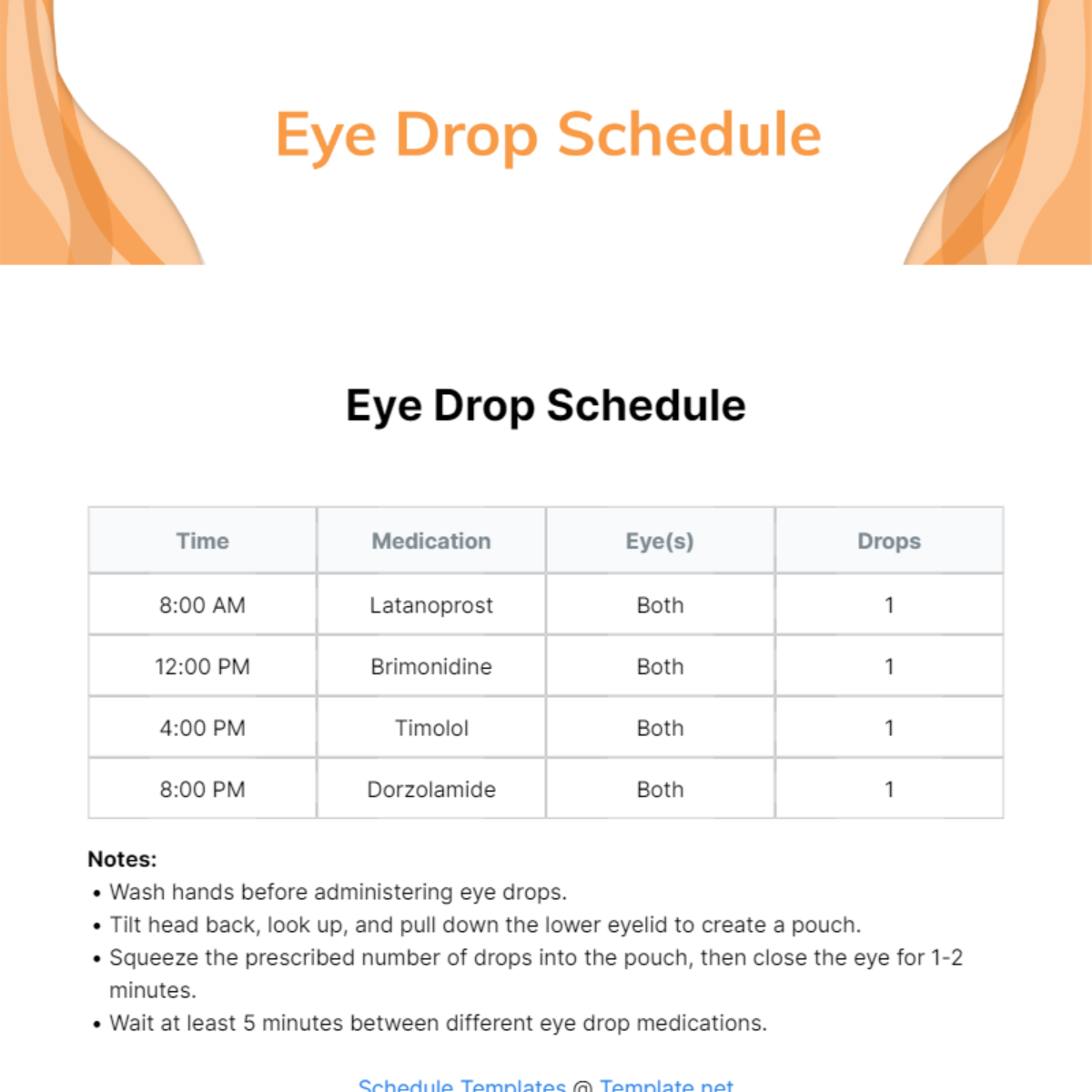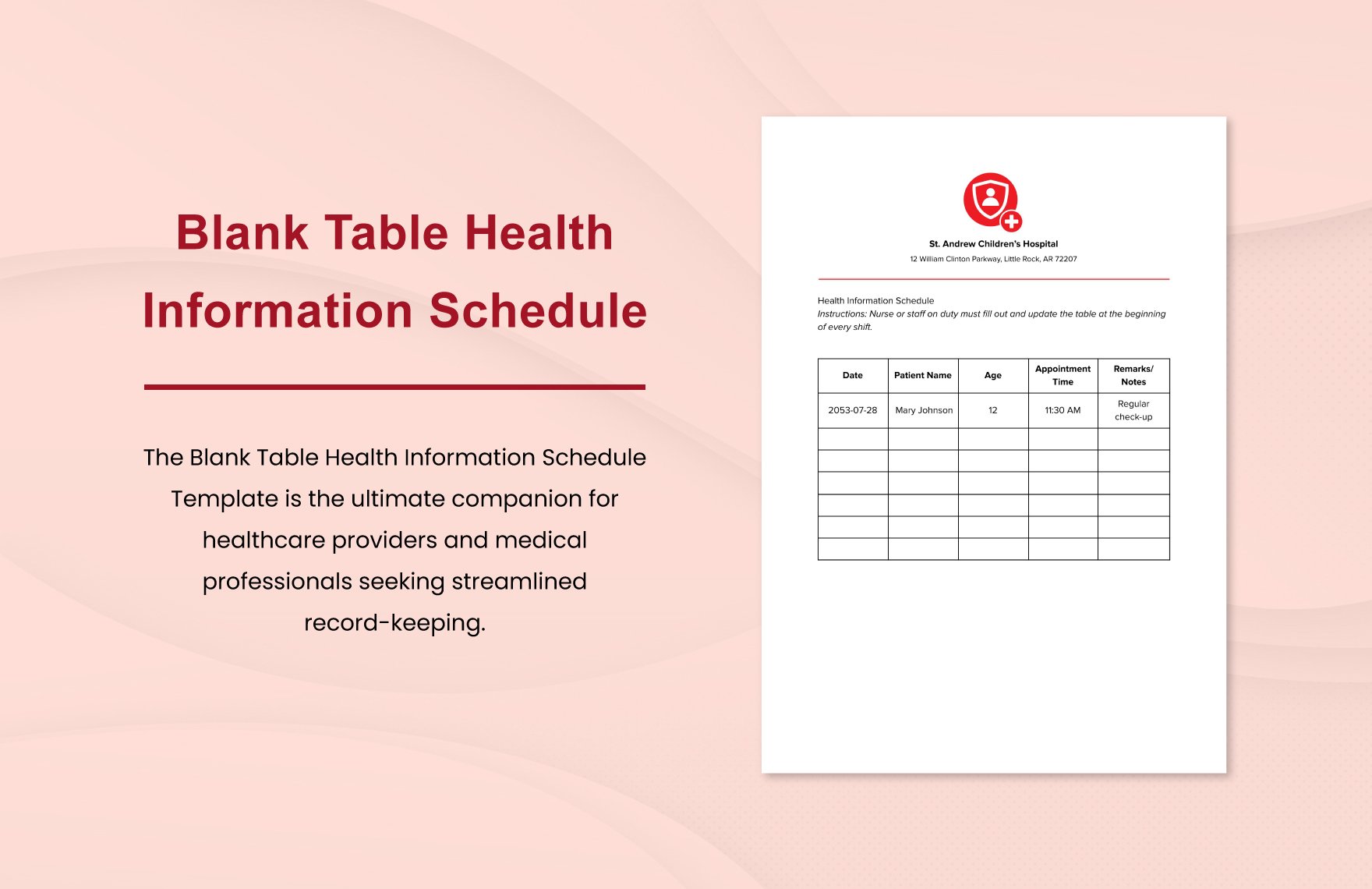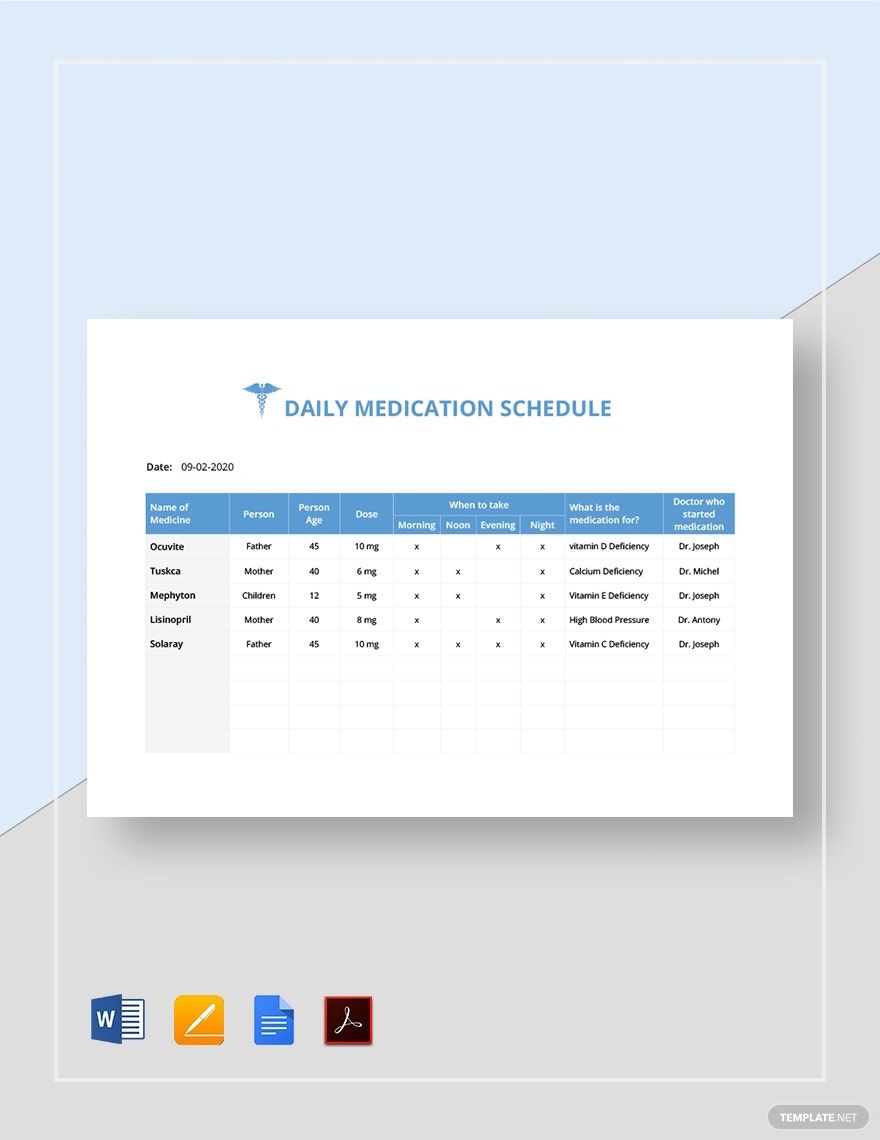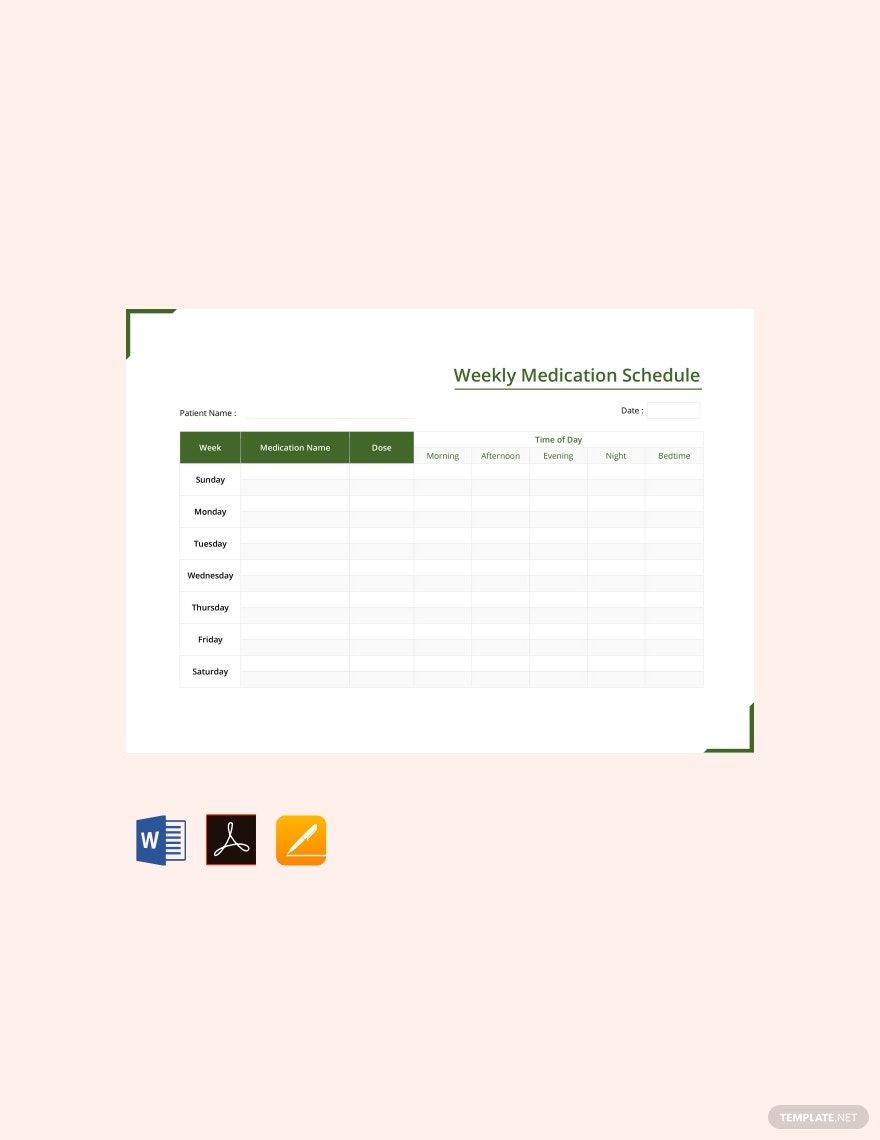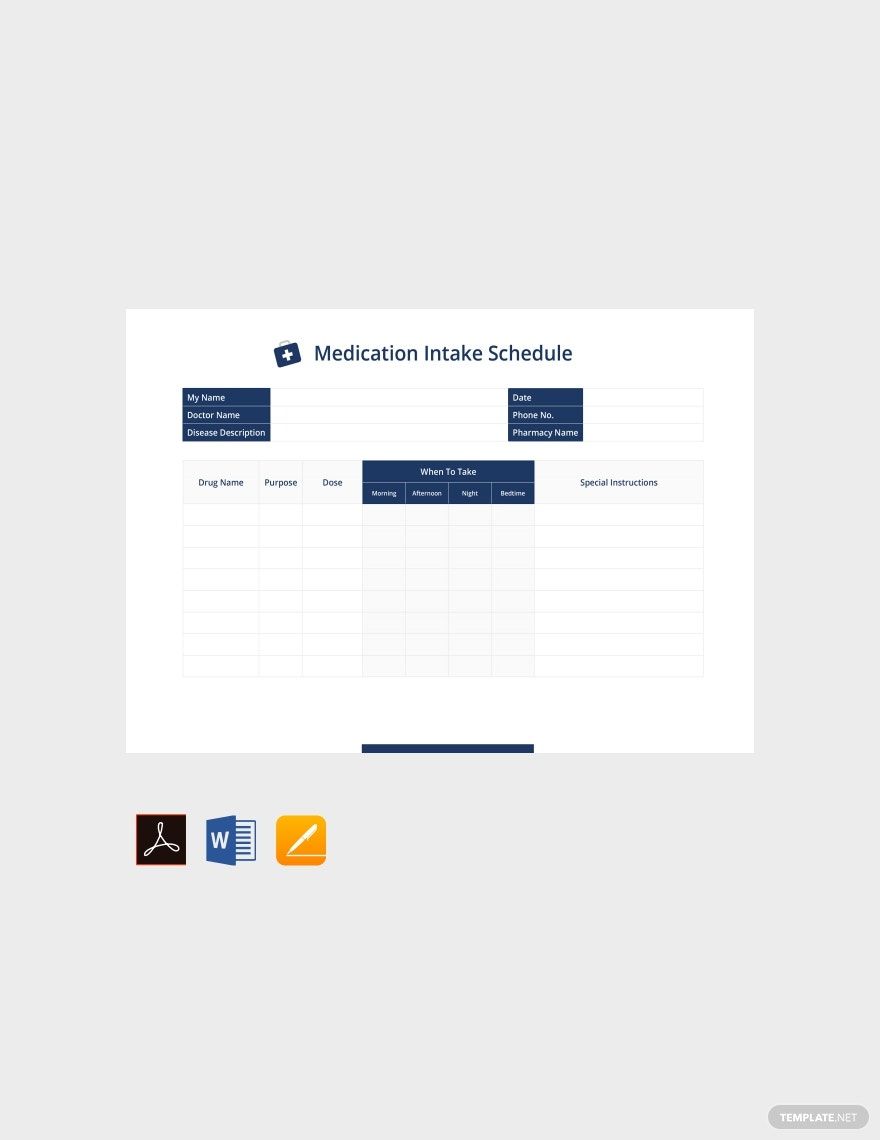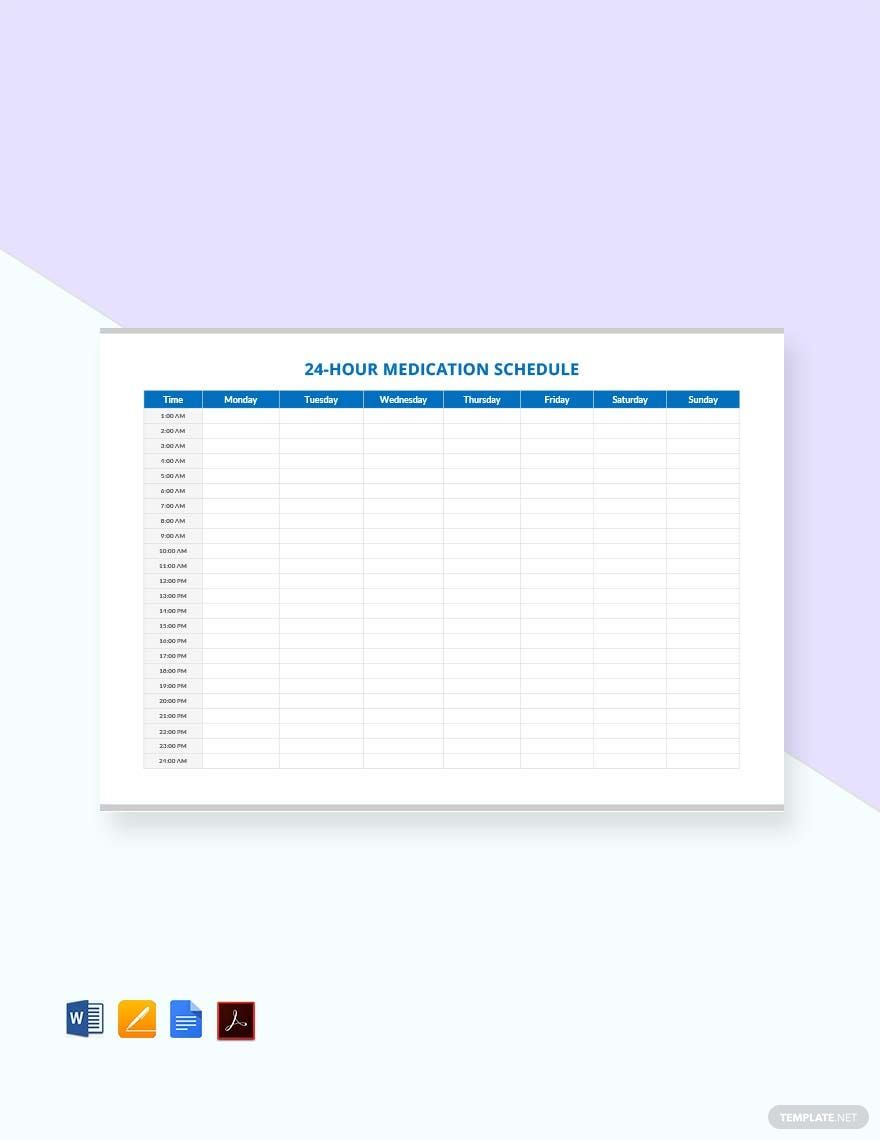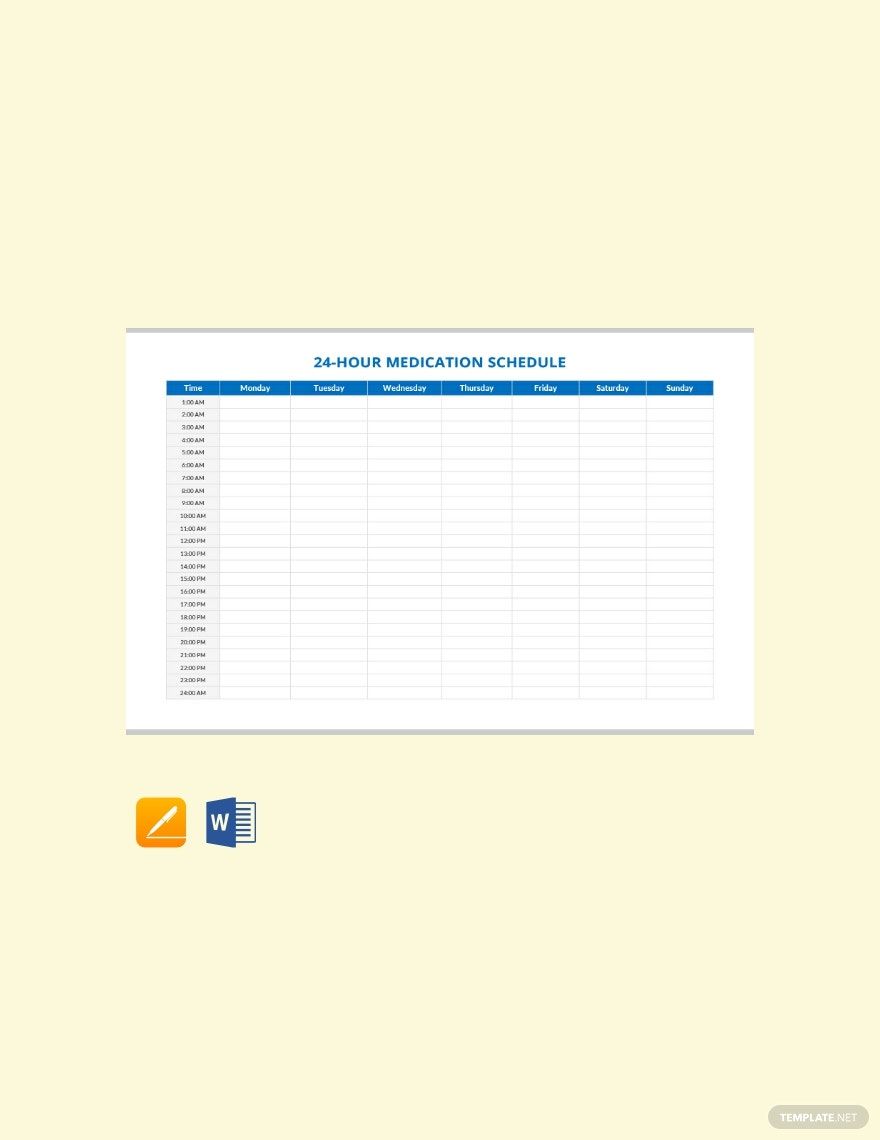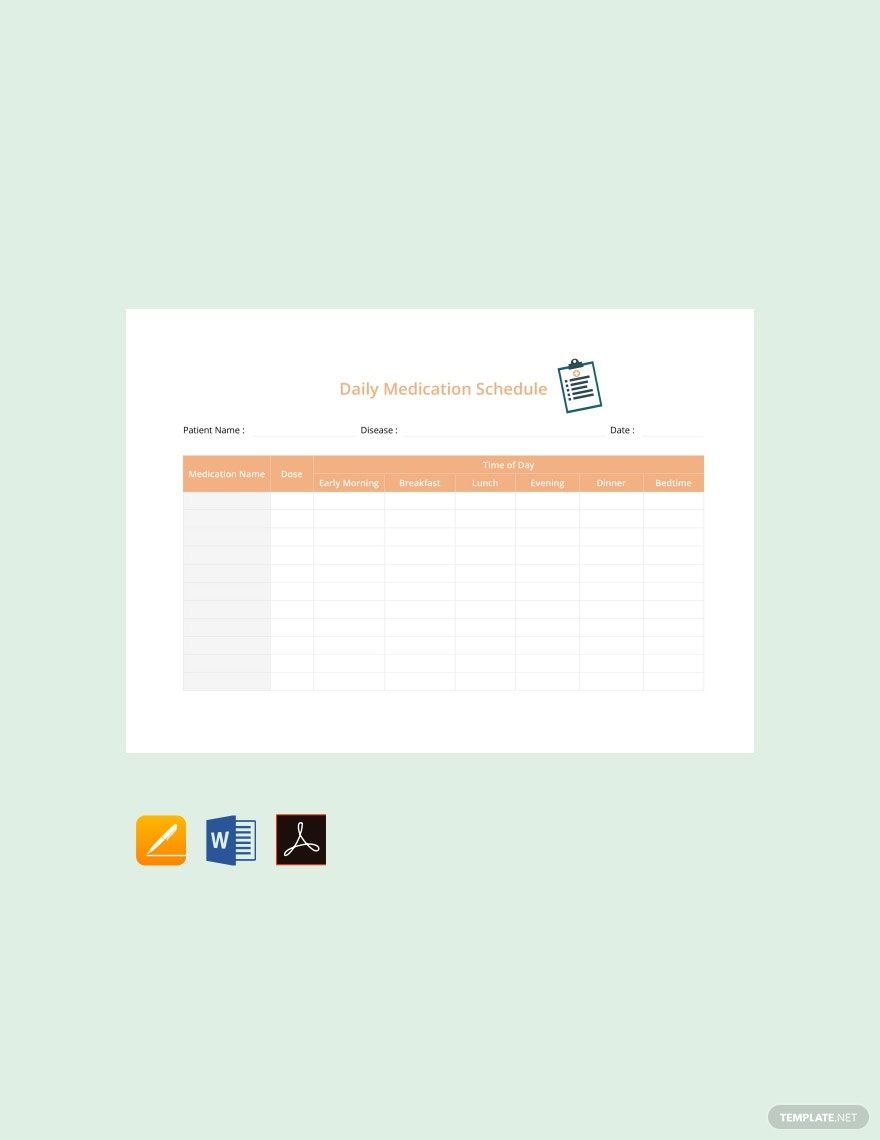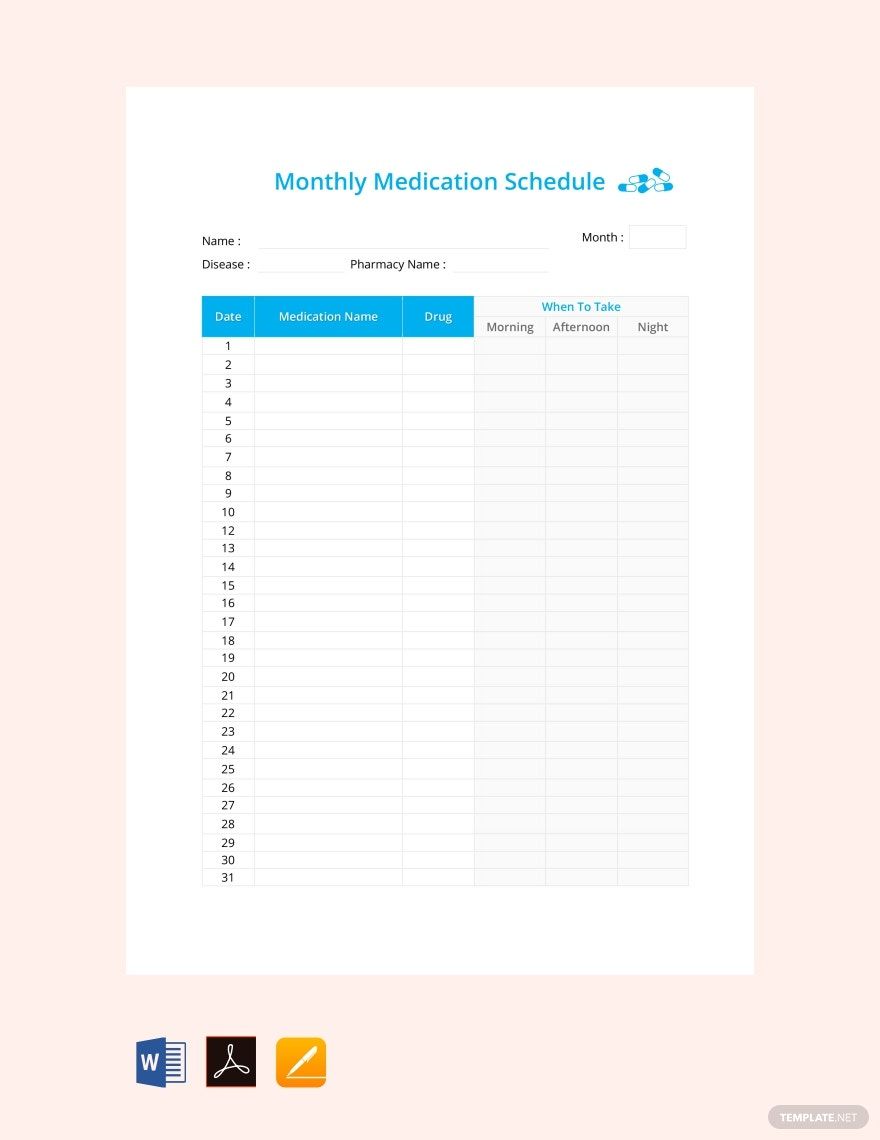Bring Your Health Management to Life with Medication Schedule Templates from Template.net
Keep your health management streamlined and organized with the Medication Schedule Templates from Template.net. Perfect for caregivers, healthcare professionals, and patients alike, these templates enable you to keep your patients engaged, enhance medication adherence, and improve overall healthcare outcomes. Use them to remind patients about their medication regimens or help elderly people manage their prescriptions efficiently. Each template includes essential details like names, dosages, and times, and can even be customized to include doctor's contact information or notes about potential side effects. No design expertise is required to use these templates—just focus on patient care. Plus, with customizable layouts that cater to both print and digital distribution, ensuring consistency in your healthcare communications has never been easier.
Discover the many Medication Schedule Template designs we have on hand, ideal for various medical needs. Select a template that best suits your needs and easily swap in your own details, adjusting colors and fonts to match your practice's branding or the patient's preferences. For an advanced touch, drag and drop icons or graphics that indicate specific medication types, and add AI-powered text tools to personalize instructions. The possibilities are endless, all without requiring any specialized skills. Templates are regularly updated to align with current health guidelines. When you're finished, download or share via print, a secure link, or email, making them ideal for multiple channels and allowing you to collaborate in real-time for optimal patient care.
